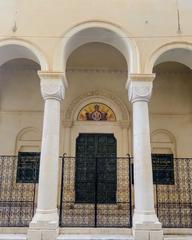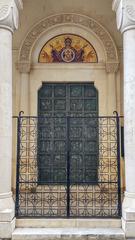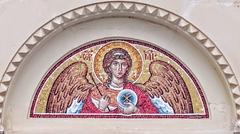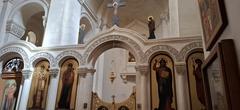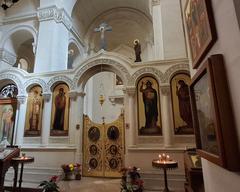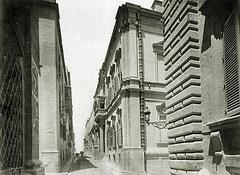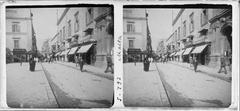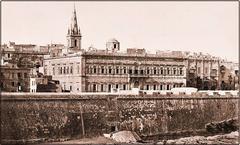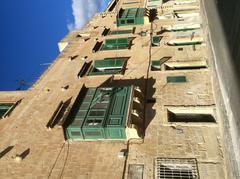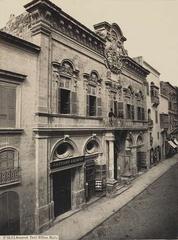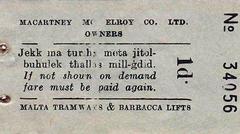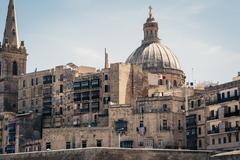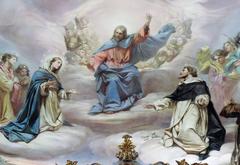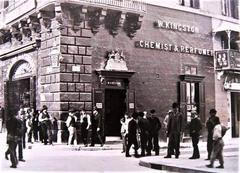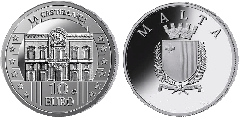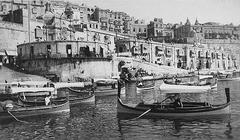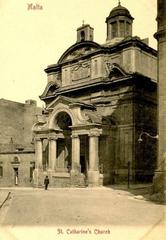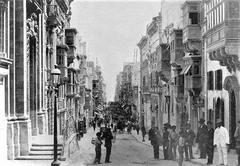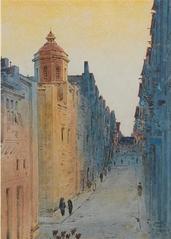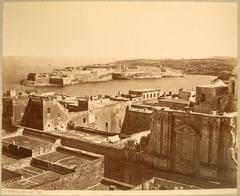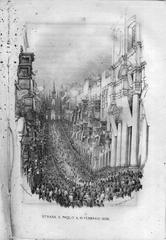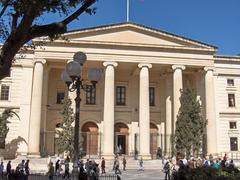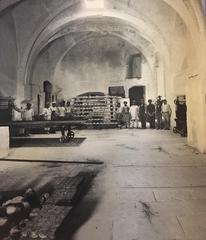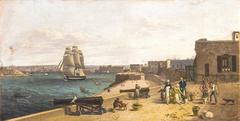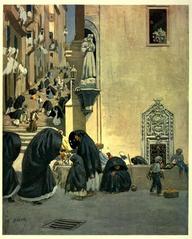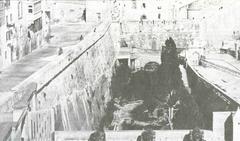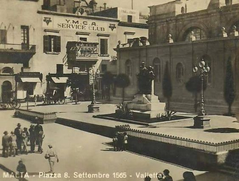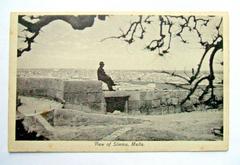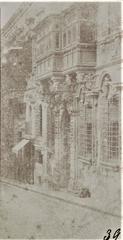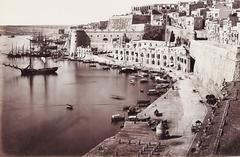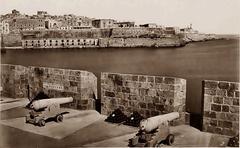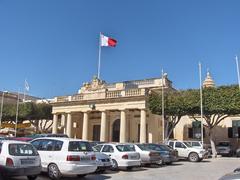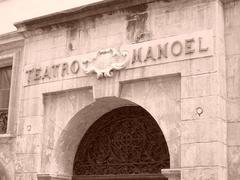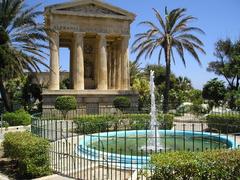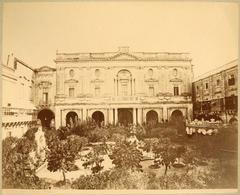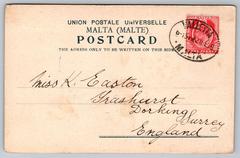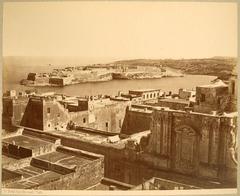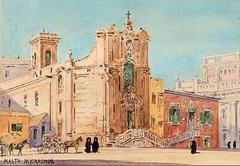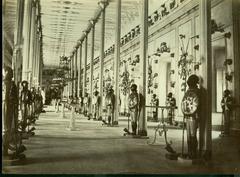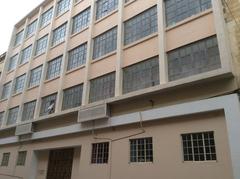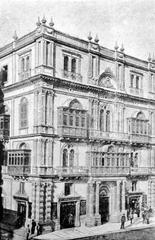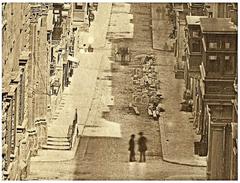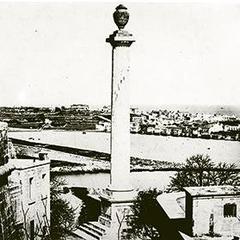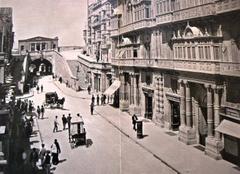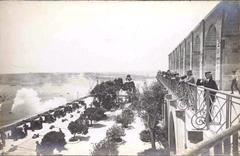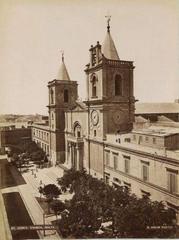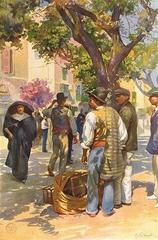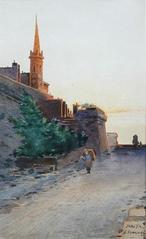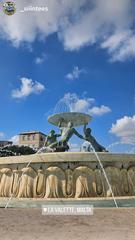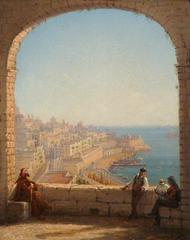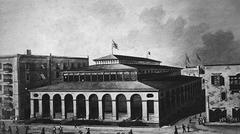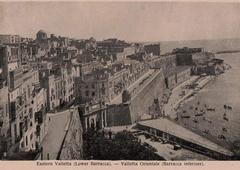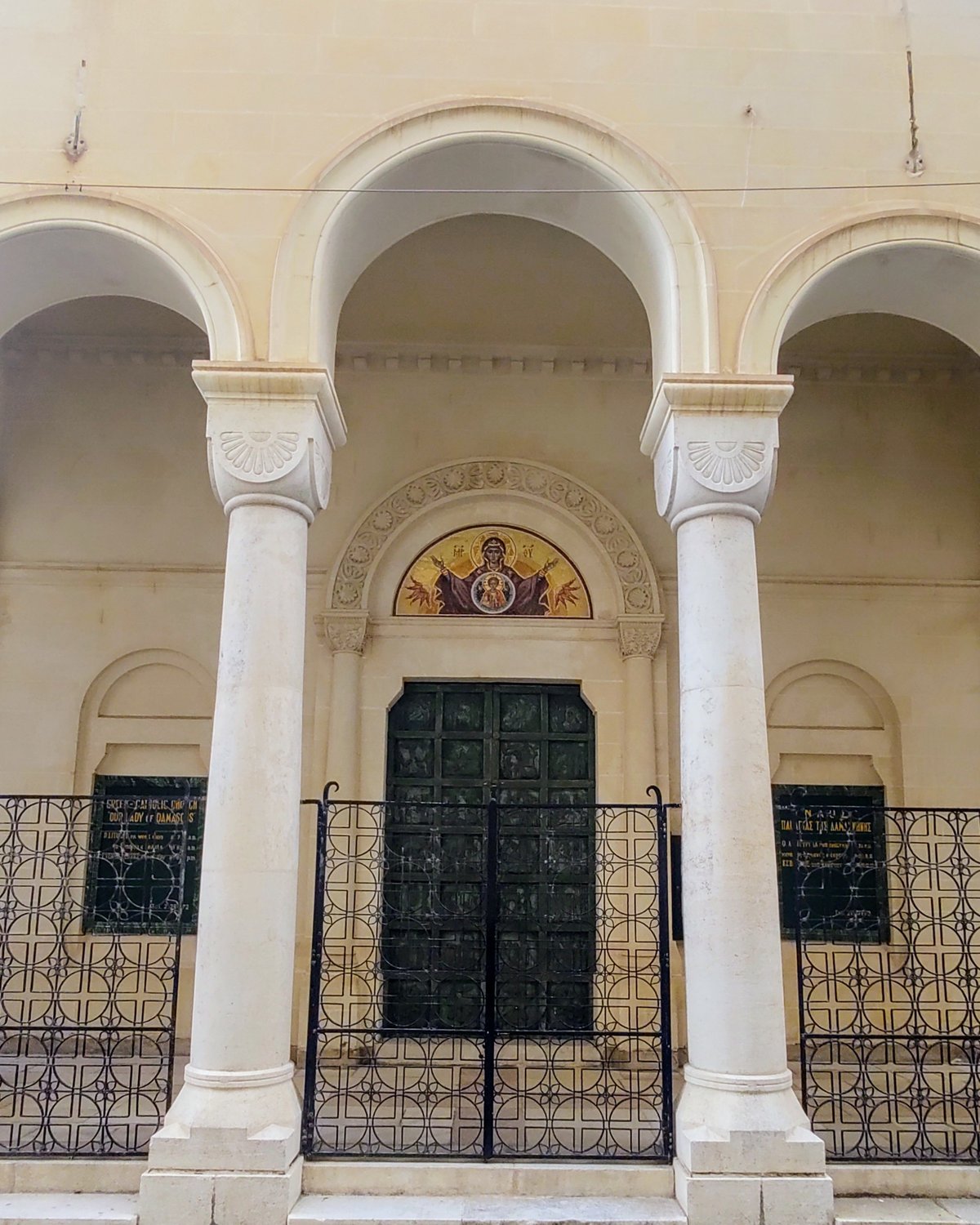
Church of Our Lady of Damascus, Valletta, Malta: Visiting Hours, Tickets, and Historical Sites Guide
Date: 14/06/2025
Introduction
Centrally located in Valletta, Malta’s capital and a UNESCO World Heritage Site, the Church of Our Lady of Damascus is a unique testament to the island’s Greek-Catholic roots and centuries-old Byzantine artistry. Founded in 1580 by Greek Catholics who followed the Knights of St John from Rhodes, the church is home to the revered icon of Our Lady of Damascus, a 12th-century Byzantine masterpiece. The church serves as a spiritual and cultural hub, offering visitors an immersive journey through Malta’s diverse religious tapestry and rich architectural heritage.
This comprehensive guide provides essential information for planning your visit, including historical context, architectural highlights, visitor amenities, accessibility, travel tips, and recommendations for nearby attractions. For the latest updates and detailed information, refer to the official resources at the end of this article (Archdiocese of Malta, Greek Catholic Malta, Aleteia).
Table of Contents
- Introduction
- Historical Overview
- The Church’s Role in Malta’s Religious Landscape
- Architectural and Artistic Highlights
- Visitor Information
- Getting There & Nearby Attractions
- Facilities & Safety
- Events & Special Occasions
- Tips for a Memorable Visit
- Frequently Asked Questions (FAQ)
- Visuals & Media Suggestions
- Conclusion
- Official Resources
Historical Overview
Founded in 1580, the Church of Our Lady of Damascus was established by the Greek-Catholic community that accompanied the Knights of St John after their expulsion from Rhodes. Giovanni Calamia commissioned the church to house the miraculous icon of Our Lady of Damascus, which had been brought to Malta in 1530. The church’s architecture is characterized by late Renaissance simplicity on the outside, with a richly adorned interior featuring Byzantine iconography. Despite severe damage during World War II, the church was meticulously restored in 1951, preserving its role as an active place of worship and a symbol of Malta’s cultural resilience (Archdiocese of Malta).
The Church’s Role in Malta’s Religious Landscape
Greek Catholicism & the Byzantine Rite
The Church of Our Lady of Damascus is the principal Greek-Catholic church in Malta, serving the island’s Greek-Catholic community and those who observe the Byzantine rite (Wikipedia). The liturgy, marked by chant, incense, and elaborate iconography, offers a distinct spiritual experience compared to the Roman Catholic majority.
The Icon of Our Lady of Damascus
Central to the church is the 12th-century icon of Our Lady of Damascus (Damaskinì), a Byzantine masterpiece brought from Rhodes. This icon is a symbol of faith and resilience, venerated by Greek Catholics, Roman Catholics, and Orthodox Christians alike. The icon is displayed in a specially designed niche, protected by acrylic glass, and is accessible for veneration during opening hours (Archdiocese of Malta, Aleteia).
Miracles, Papal Recognition, & Intercultural Significance
The icon is credited with miraculous intercessions and was solemnly crowned by Vatican representatives in 1931, marking the 15th centenary of the Council of Ephesus. The church’s history as a refuge for Greek Christians and its continued openness to diverse Christian traditions exemplify Malta’s multicultural and interfaith heritage. The church also houses additional icons, such as that of Our Lady of Mercy, further enriching its artistic and spiritual legacy (Catholic Insight).
Pilgrimage & Local Devotion
The church is a pilgrimage site, especially during Marian feasts and the annual feast of the Assumption on August 15, commemorating its post-war reconsecration. Processions and special liturgies draw both locals and visitors, highlighting its ongoing role in Malta’s living religious traditions (Wikipedia).
Architectural and Artistic Highlights
Exterior & Interior Architecture
The church’s exterior, built from local limestone, features a classic Renaissance façade with a triangular pediment and a modest bell tower (Malta Themed Tours). The post-war restoration preserved the original design while updating structural elements. Inside, the single-nave layout is marked by an iconostasis—an ornate screen separating the sanctuary—rare in Malta’s predominantly Latin-rite churches.
Iconography & Artworks
The church boasts a fine collection of Byzantine icons, including the famed Damaskinì, icons of Christ Pantocrator, and various saints. The iconostasis and side chapels display intricate woodwork and gilded ornamentation. Modern works by Maltese and Greek artists complement the historic collection, and visitors can admire liturgical objects such as silver chalices, censers, and embroidered vestments.
Memorials & Inscriptions
Plaques and inscriptions in Greek and Latin commemorate key figures and events, underscoring the church’s multicultural significance.
Visitor Information
Opening Hours & Admission
- Monday–Saturday: 9:00 AM – 5:00 PM
- Sunday: 10:00 AM – 1:00 PM
- Admission: Free (donations appreciated)
- Special Events: Hours may vary; check the Archdiocese website for updates.
Accessibility
- Wheelchair Access: Ramps at entrance; some areas may have uneven flooring due to the building’s historic nature.
- Assistance: Available upon request.
Dress Code & Visitor Etiquette
- Modest attire required: shoulders and knees covered.
- Respectful silence and behavior, especially during services.
- Photography allowed (no flash or tripods); always check with staff before photographing the icon.
Guided Tours & Special Events
- Guided Tours: Available by appointment. Arrange via Greek Catholic Malta or local tour operators (Malta Themed Tours).
- Religious Services: Divine Liturgy in the Byzantine Rite, mainly on Sundays and feast days.
Getting There & Nearby Attractions
Address: 255, St John Street, Valletta, Malta
- By Foot: 5–10 minutes from City Gate and main bus terminal.
- By Public Transport: Valletta is well-served by buses; parking is limited inside the city.
- Nearby Sites: St. John’s Co-Cathedral (website), Upper Barracca Gardens (info), Grandmaster’s Palace (details), and the National Museum of Archaeology.
Facilities & Safety
- No public restrooms onsite; facilities available in nearby cafes and public areas.
- Conservation measures are in place, including climate-controlled housing for the icon.
Events & Special Occasions
- Annual icon restoration anniversary (June)
- Feast of the Assumption (August 15)
- Marian feasts and ecumenical gatherings
Tips for a Memorable Visit
- Confirm opening hours before your visit, especially during feast days.
- Visit early or late for a quieter experience.
- Use public transport to avoid parking issues.
- Support preservation with donations or by lighting candles.
- Download the Audiala app for audio tours and up-to-date visitor tips.
Frequently Asked Questions (FAQ)
Q: What are the opening hours?
A: Monday–Saturday 9:00 AM–5:00 PM; Sunday 10:00 AM–1:00 PM. Hours may vary during special events.
Q: Is there an entrance fee?
A: No; entry is free, but donations are appreciated.
Q: Are guided tours available?
A: By appointment via the parish office or local tour providers.
Q: Is the church accessible for visitors with mobility challenges?
A: The entrance is at street level with ramps; some uneven flooring inside.
Q: Can I take photographs?
A: Yes, but no flash or tripods. Always check before photographing the icon.
Visuals & Media Suggestions
Include high-resolution images of the exterior, nave, iconostasis, and the miraculous icon with descriptive alt text (e.g., “Church of Our Lady of Damascus visiting hours,” “Byzantine icon in Valletta historical site”). An interactive map and links to virtual tours further enhance the online visitor experience.
Conclusion
The Church of Our Lady of Damascus is a living testament to Malta’s layered religious history, intercultural vibrancy, and remarkable artistic heritage. Its serene atmosphere, architectural charm, and priceless collection of Byzantine icons create an unforgettable experience for pilgrims, history buffs, and travelers alike. As you explore Valletta’s historical core, let this church be a highlight—where faith, culture, and Maltese hospitality converge.
Official Resources and References
- Restoration of the Venerable Icon of Our Lady of Damascus – Archdiocese of Malta
- The Ancient Marian Icons of the Greek Catholic Church of Our Lady of Damascus in Valletta, Malta – Aleteia
- Explore 5 Churches of Valletta: Uncover the Hidden Gems – Malta Themed Tours
- Miraculous Icon of Our Lady of Damascus Restored – Archdiocese of Malta
- Greek Catholic Malta Official Website
